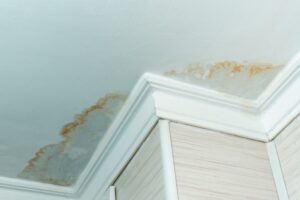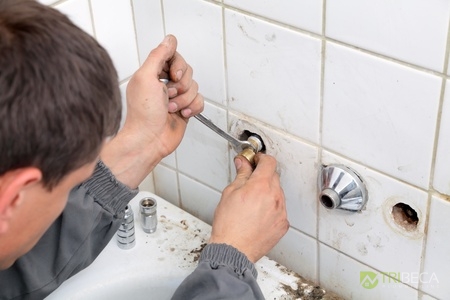Just how do you feel about Tips For Water Leak Detection In Bathroom?

Shower room leakages are frustrating as they interrupt your day's strategy. They vary in seriousness depending upon the source of the leak. Yet, you must prioritize them, as they can promptly worsen. So, it is a relief that most washroom leakages are easy to take care of and detect, with minimal price implications.
Having a water leakage in washroom can be demanding to the home owner. The article serves as a "initial aid" when you need an emergency feedback to a water leak in bathroom.
Detection and Fixing of Water Leak in Washroom
Water leak in washroom commonly arises from plumbing as well as pipeline faults. There are a number of types of shower room leakages. You might need a fundamental knowledge of these leak kinds to discover the water leakage in washroom. Here are the typical shower room leaks and also take care of suggestions:
Sprinkle Leaks
These often result from water spilling on the washroom flooring from the bath tub. It is a consequence of using an inadequate shower curtain or worn bath tub lining. It harms the bathroom flooring and might cause rot to wood floors and also shower room doors. The water typically swimming pools around the bathtub or shower. This might cause worse shower room damages without punctual handling.
What to Do
This washroom leak is the simplest to take care of. You only require to replace the curtains or recaulk the bathtub or shower. If the leak has damaged the restroom flooring or door, you may need to transform these to prevent further damage. The bright side is that you can involve a plumbing expert to help with the shower room repair service.
Toilet Leaks
Occasionally, water leakages from the toilet and pools around the toilet base. It is an eye sore in the restroom and needs punctual focus.
What to Do
You just require to tighten them if there are loosened bolts between the tank as well as commode. In some cases you might need to reapply wax on the gasket or hire a shower room leakage expert to change damaged or used components.
Clogged Shower Room Sinks
In some cases, the water leak in shower room results from sink clogs. This is commonly a problem to home owners and may be unpleasant. Obstructions might result from the buildup of soap residue, hair fragments, or particles that clog the drain. It is easy to handle clogs, as well as you might not need expert abilities.
What to Do
You can utilize a drainpipe snake to remove the debris in the drainpipe and allow the stagnant water flow. Drain cleaners are likewise readily available in stores and are easy to use. A bettor is also handy in removing your drainpipe. It is a typical home tool and also can be found in helpful in clearing annoying clogs in sinks and drains pipes.
Conclusion
Water leakages in the washroom are avoidable events in the house. When they do, fix them quickly, or involve the services of a specialist.
The write-up serves as a "initial help" when you need an emergency situation feedback to a water leakage in restroom.
Water leakage in restroom frequently results from pipes as well as pipeline mistakes. You may require a basic knowledge of these leakage kinds to identify the water leakage in shower room. It damages the washroom flooring and might cause rot to wood floors and washroom doors. Occasionally, the water leakage in restroom results from sink blockages.
Signs That You Have a Water Leak in Your Bathroom
Puddles and Damp Patches
Water that’s appearing unexpectedly is a bad sign. If you’ve not taken a bath or shower, yet water’s still on the floors, then you’ve sprung a leak.
Keep an eye out for puddles on the floor, around the base of your shower, and/or in the cabinets of your bathroom. That water’s coming from somewhere!
The same goes for dampness in the room. Damp patches (however big or small) that appear anywhere from the floor to the ceiling is another sign of a leak.
Mold
Mold isn’t uncommon in bathrooms.
It’s found in damp and humid conditions, making a bathroom prime territory for mold to form. This is true in and around areas like the shower.
Confusingly, though, mold can also be a signal of a leak. Remember the damp patches we mentioned above? Well, it’s only a matter of time before mold grows on them.
Note any mold that’s started to form in ‘unexpected’ places. Pay close attention to mold in areas that should, in theory, remain dry.
Peeling Wallpaper
You may or may not have wallpaper in your bathroom.
If you don’t, then skip this one. However, for those that do, read on!
Essentially, any damp that’s present beneath a layer of wallpaper will cause it to peel away from the wall. Sure, this happens in time anyway, as the adhesive fails.
But don’t let that fact dissuade you from suspecting a leak. A well-wallpapered bathroom won’t peel unless there’s a problem.
Tiling Issues
On the subject of things coming off walls, pay attention to your bathroom tiles.
Never ignore them when they’re broken or loose, or have damaged caulking between them. These can let water trickle through and impact the materials beneath in what’s called a ‘tile leak’.
Bad tile leaks can be expensive to repair. If you’re lucky, you can get away with just replacing the tiles and grout/caulk. Sometimes, though, you’ll need a brand new backing.
The basic message here is to regularly check the tiles in your bathroom for damage, wear and tear! Call a professional for support at the first sign of trouble.
Strange Noises
Nothing sends terror through the hearts of a homeowner like the sound of dripping water in the walls! Any obvious water sounds must be addressed as soon as possible. You’ve sprung a leak which could be causing untold damage to the property.
Keep an ear out for more subtle and unrecognizable sounds too. For instance, a high-pitched hissing noise in the walls can come from a pipe that’s developed a slight crack.
Call the professionals whenever you notice watery noises persisting in the absence of bathroom appliances being used.
Strange Smells
As we’ve seen, leaks often cause damp, mold and mildew to develop in your bathroom.
However, you might notice a strange smell before these key visual clues emerge.
Think about the last time you went down into an old basement. The dank and earthy odor in the room is like what you can find in a bathroom with a leak. Unfortunately, many homeowners don’t understand what they’re smelling!
They might buy a new air freshener to remove the smell, without addressing the actual cause. It would be like spraying deodorant on your clothes instead of putting them through the wash! The smell improves, but the leak is allowed to get worse.
https://www.plumbtimesc.com/7-signs-that-you-have-a-water-leak-in-your-bathroom/

We were guided to that article about How to Detect and Fix a Bathroom Leak through an associate on another web page. Make sure you take the opportunity to promote this article if you liked it. Thanks so much for your time spent reading it.
Access top-rated emergency plumbers.